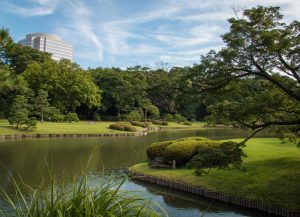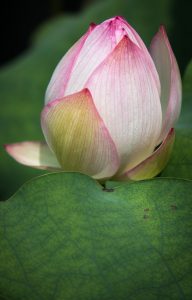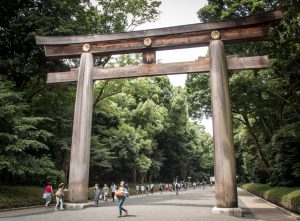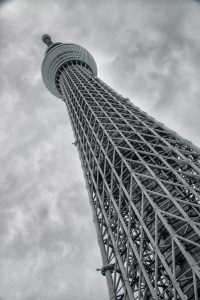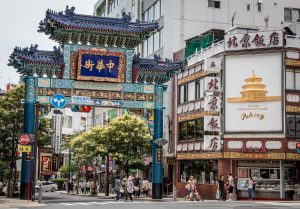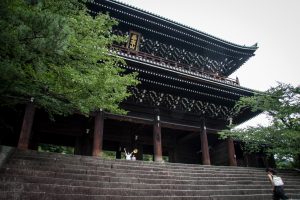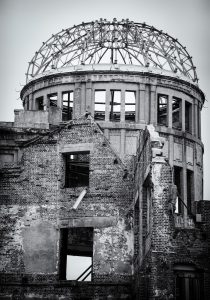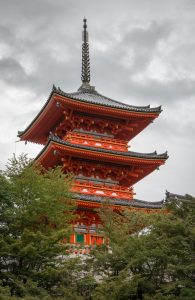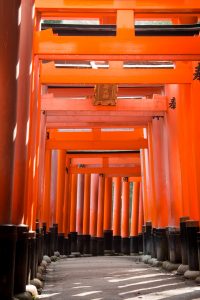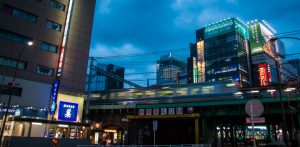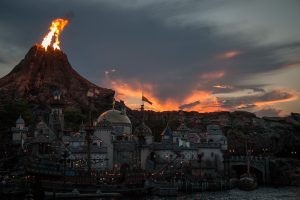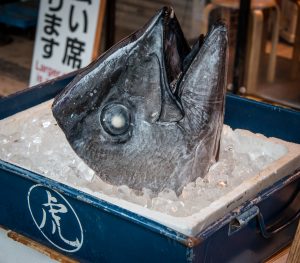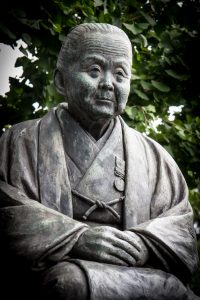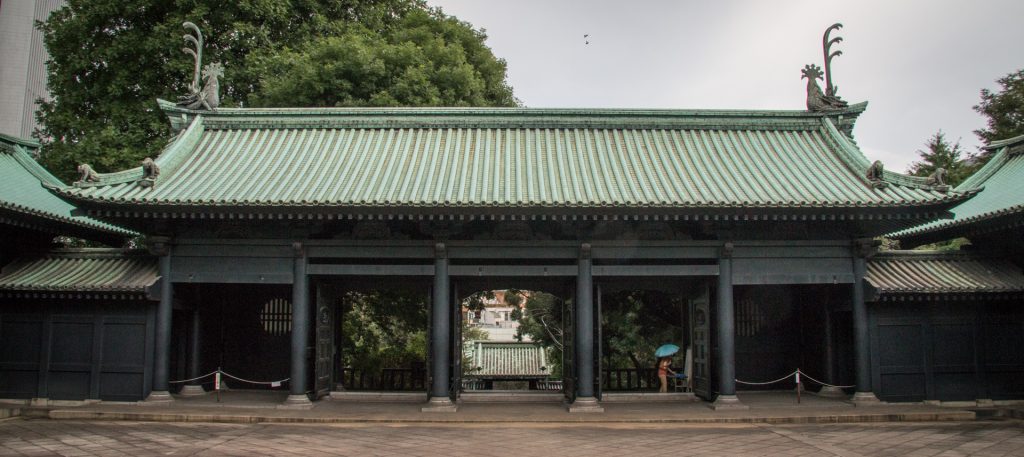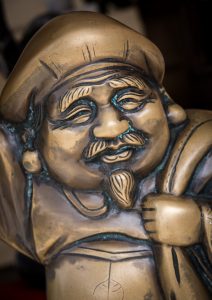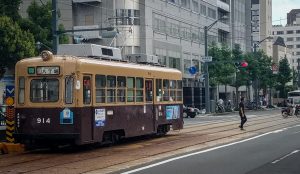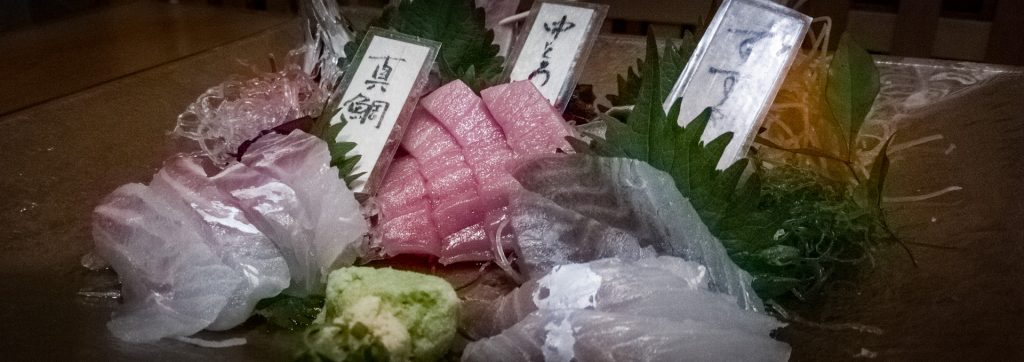Photos:
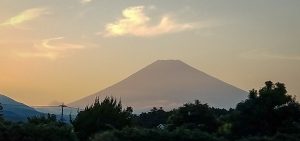
Mt. Fuji from near Mishima
- Tokyo (including a side trip in Yokohama)
- Kyoto
- Hiroshima and Nara (day trips from Kyoto)
- DisneySea
Background
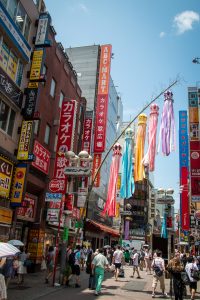
In Shibuya
I learned in February that a colleague and I would be heading to Japan, specifically Tokyo, for a week of customer site visits and workshops. As it’s a long flight and I didn’t know if I’d get back anytime soon, I decided to stay a bit longer to see some of the country. Suzanne considered coming but didn’t really have the vacation time for more than week. She felt that was kind of short given, again, the long flight. My overall plan was to fly out Friday (early morning), arriving in Tokyo Saturday afternoon. I then spent the week working in Tokyo. Afterward, I spent three days in Tokyo, five days in Kyoto, and then two days in Tokyo before flying home.
In terms of planning, I felt I did very little pre-trip planning, certainly less than most trips. While our Japanese agent took care of the first week, I worked out the rest of the trip using Lonely Planet Japan (which seemed to the the book based on the number I saw) plus a few others from the library and Reddit’s JapanTravel group. One thing about Tokyo is that it’s a huge city (9.3 million people) and doesn’t really have a center. Instead, it’s basically a series of centers so figuring out where to stay was tricky. In the end, on the advice of a colleague, I spent the first “tourist time” in Ikebukuro and the second, after Kyoto, in Ginza to get a feel for two very different sections of the city. I think this worked well. Also, I felt it wasn’t absolutely critical where to stay as long as it’s near a station on the JR Yamanote Line which rings the city. Staying in Ikebukuro was convenient as it’s a major train hub with multiple JR and Metro lines converging there.
Itinerary
Fri 14-Jul — Sat 15-Jul – Fly to Japan
I flew from Newark to Haneda Airport, which is closer to downtown than the other main airport, Narita. I had to connect in Minneapolis which broke up the flight a bit. The flight over was okay, but long at 12 hours. Luckily I was in Comfort+ and had no one next to me. It was the longest flight I’ve been on (the second being 10 or so hours to Istanbul). Arrival was pretty straightforward. It did help that I looked at the airport terminal maps online beforehand. After loading up my metro travel card (Pasmo – borrowed from a colleague), I headed off on the monorail to Hamamatsucho station where I picked up the JR Yamanote line to Komagome (where our work hotel was). I managed to just catch each train so made good time. After arriving at the airport around 1:30, I made it to my hotel (Hotel Mets Komagome) by 3:00 or so. After settling in, I headed off to visit the Rikugien Gardens just down the street. I find being able to be outside and active helps with jet lag, a bigger issue this trip as Japan is 13 hours ahead. For dinner, I met up with our agent (she was at the office which was just down the street) and we headed off to have some great sushi, sashimi, and a bunch of other stuff that I wasn’t sure what was. In any case, it was all good. I ended up turning in fairly early as I was beat but was excited to be in Japan.
Sun 16-Jul – Tokyo – Shibamata
Our agent (Hiromi) had offered to play tour guide for the day. (I get the impression that she really likes showing guests around the city.) I thought this would be great. We met up around 10am. (I didn’t want to meet too early as I wasn’t sure how I’d handle the jet lag. Turns out, I did okay.) We hopped the train and headed a bit east of central Tokyo to Shibamata. This area has a very nice traditional shopping street (Taishakuten-Sando) leading to a wonderful Buddhist temple (Taishakuten Daikyoji). This temple is known for some spectacular wood carvings. It’s impossible to describe the detail and three-dimensionality of them, but they were really something to see. After the temple, we visited the historic Yamamoto-tei house which was great. Hiromi mentioned that her grandparents had a very similar house. We also had some traditional green tea, matcha. I realize this is the new thing here in the US, but I’m not a huge fan and it’s everywhere in Japan, including being the most common cold drink. Seeing Shibamata was really nice as it’s off the beaten Western tourist trail and I would likely not have gone on my own. We then hopped the train down to Shinjuku and walked to the Meiji shrine. This has the largest wooden torii (Japanese gate) in Japan, measuring 36 feet high. Next, we continued walking on to Shibuya, one of the busiest bits of Tokyo and home to the famous Shibuya pedestrian crossing. After some ice cream, I grabbed a bento box at the department store for dinner before I headed back to my hotel and Hiromi headed home. It was a great first day seeing something of Tokyo, especially being able to do it with a true native. (Hiromi grew up in Tokyo.)
Mon 17-Jul — Fri 21-Jul – Work
These were all work days with a mix of visits to customer sites, a workshop, and a conference talk. On Wednesday night, I headed out to the department store at Ikebukuro, taking the time to find my next hotel as well. On Friday morning, we did have a late start, so I had some free time. I ended up wandering around Komagome a bit, spending some time exploring the Somei Cemetery and a couple of nearby shrines.
Sat 22-Jul – Tokyo
I elected to move to a different part of the city after the work week so I started the day by packing up my stuff and going the three stops to Ikebukuro where I left my big suitcase at my next hotel (Tokyu Stay Ikebukuro). For the day, I headed back to Meiji Shrine to spend some more time taking some photos and to visit the inner garden. I walked back down to Shibuya and wandered there for a while. It’s quite a hectic area, something like the Times Square of Tokyo. I did manage to find a good soba noodle shop for lunch. After spending a couple of hours in Shibuya, I headed over to Nihonbashi to the flagship Mitsukoshi store. This is the oldest department store in the world and, why I was most interested, the store that is in the Japan pavilion at Epcot in Disney World. After poking around some of the 15 floors, I grabbed the Metro (subway) back to my hotel as check-in time had passed and I could get into my room. I started a load of laundry (the hotel had a washer/dryer in the room – first load was free and more were only 27 cents for the soap). I spent some time relaxing a bit before wandering around the neighborhood, finding a great yakitori (grilled meat skewers) place for dinner.
Sun 23-Jul – Tokyo
Today, I headed to the east part of Tokyo to visit the Asakusa district. This is a more historic district and somewhat resembles Shibamata, but it has a lot more tourists. I managed to get to the Sensoji Temple before the largest crowds which was nice. While the temple was nice, the Taishakuten Daikyoji in Shibamata was more impressive due to the wood carvings. There was a nice garden here and, just past the temple grounds, a small covered market street. After spending some time here, I walked down toward the Sumida river and over to the Tokyo Skytree. I didn’t actually go up it as the weather was cloudy and overcast but there was something of a mall at the base where I picked up a few souvenirs and grabbed some lunch of takoyaki (fried balls of octopus) in the food court. (I wasn’t sure what it was when I ordered it. It was okay but I wouldn’t rave about it.) Next I hopped the metro to the Akihabara district. This is the gamers/manga/anime paradise of Tokyo. It was kind of cool to wander through but not all that exciting. Wandering a bit further, I came across the Kando Myojin shrine and Yushima Seido temple which were both a nice surprise and worth a visit. After a stop at the hotel, I grabbed pizza and a beer for dinner at Beersaurus. It was quite good, especially the beer (a really nice pineapple sculpin API from Ballast Point in San Diego).
Mon 24-Jul – Yokohama
As a bit of a diversion for today, I hopped the train about an hour down to Yokohama. This is the second largest city in Japan and has been a port city for many years. It is known for its Chinatown. I started at the Cup Noodle Museum which was kind of cool. I didn’t make my own cup as most of them would have meat in the broth which you can’t bring back to the states. This was followed by a walk along the waterfront and then into Chinatown. After much wandering and a stop for lunch, I hopped the train back to Tokyo station. From here, I headed over to the Imperial Palace. While the gardens were closed, it was still nice to walk around the walls. It’s amazing there’s such a giant piece of real estate right in the middle of Tokyo dedicated to the emperor. Of course, the emperor is highly revered and can trace his lineage back to the 700s. After quite a long walk around to the far side, I hopped the subway back to the hotel, did another load of laundry, and packed as I was heading to Kyoto the next day. Dinner was back at the yakitori place from Sat. I also activated my Japan Rail pass which I could conveniently do at Ikebukuro station.
Tues 25-Jul – Travel to Kyoto
This was my day to head to Kyoto. After breakfast and final packing, I managed to get my suitcase sent along to Kyoto. Japan has this amazing luggage forwarding service where I could send my luggage overnight to Kyoto for the equivalent of $15. It was so worth it to not have to worry about dragging a big bag though the busy, rush hour train to Shinagawa station (in Tokyo) and then onto the Shinkansan. I put a couple of nights worth of things in one daypack and had my day stuff in another and was good to go. I hopped the Yamanote line to Shinagawa and then the Shinkansen bullet train for the two hour/33o or so mile trip. While you don’t need them, I did make a seat reservation as (a) they’re free and (b) I had time. (The agent spoke very good English.) This did make it easier in that I didn’t have to worry about finding a seat and was easy to do. Once in Kyoto, I hopped the subway (Pasmo also works in Kyoto — yay!) and walked to my hotel — Sakura Ryokan Urushitei. I do have to say that this was a wonderful hotel and would highly recommend it. I opted for the Japanese style room as a change. This was interesting as the only furnishings were a table and two floor level chairs. There was a futon in the closet for sleeping. It was worth the experience but I was glad for the Western style room when I returned to Tokyo. Anyway, after dropping my stuff off, I headed out the the Nishiki Market and some spectacular Burnt Miso Ramen at Kyoto Gogyo. Once done with the market, I headed across the Kamo River to the Yasaka Shrine. Walking through here, I continued through Maruyama Park and visited Chion-In and Shoren-in temples before heading back to the hotel. I managed to catch bus to get sort of close to the hotel but also managed to get caught in a downpour just a couple of minutes from the hotel. After check in, I unpacked and relaxed a bit before heading out for a decent, but kind of expensive, chicken dinner at Kumura.
Wed 26-Jul – Hiroshima
As a day trip from Kyoto, I decided to take the train the two hours southwest to Hiroshima. I wasn’t sure what to expect, but it was an incredibly powerful day. (I think it felt even more powerful as I have also seen the Enola Gay, which dropped the atomic bomb on Hiroshima, at the National Air & Space Museum’s Udvar-Hazy Center a few years back.) I took the Hiroshima meipuru~pu tourist bus (free with JR Pass) down to the Atomic Bomb Dome. It was incredibly moving being here. In addition to seeing the Atomic Bomb Dome, I wandered around the Peace Memorial Park, visited the Hiroshima National Peace Memorial Hall for the Atomic Bomb Victims (which was well worth it), as well as the Hiroshima Peace Memorial Museum. After lunch and the museums, I headed to Hon Dori shopping street. It was a bit odd walking around a normal city knowing what happened there 72 years ago (almost to the day). Near the end of the day, I stopped by the Shukkeien Garden before heading back to Kyoto with a quick stop at Yoshinoya for dinner.
Thur 27-Jul – Kyoto
This was another day in Kyoto. I started by a visit to Otani Hombyo and then a walk through the Otani Cemetery which was huge. This led me up to the Kiyomizu-dera Temple complex. This is one of the highlights of Kyoto. Unfortunately, the main hall was covered in scaffolding for renovations. (This was true for several things, likely due to the run up to the 2020 Tokyo Olympics.) After my visit, I wandered through the historic section along Sannen-Zaka and Ninen-Zaka, stopping for some noodles for lunch. It was then a visit to Kodai-ji Temple and Ryozen-Kannon. The latter was a memorial to unknown soldiers of WWII and was topped with a giant Buddha. After that, I stopped by Yasaka shrine on the way down into the historic district of Gion. A real highlight was Kennin-ji Temple, especially the Twin Dragons ceiling painting in the Hatto hall. (I did not include a photo of the red slippers I had to where to get there.) After a bit of a rest at the hotel, I headed back out for some evening photos around the Yasaka Shrine. After some good pizza (and chatting with an American college student tourist and Finnish game programmer), I headed back to the hotel to pack up to send my suitcase back to Tokyo in the morning. (Again, this was so very worth the $15 or so.)
Fri 28-Jul – Nara
Another day trip, this time to Nara, about 45 minutes away. Nara was the first capitol of Japan, from 710 to 794 (followed by Kyoto from 794 to 1868 when it was moved to what is now Tokyo). It’s also known for having tame wild deer throughout the historic area. My first stop was Todai-ji temple, site of the 50 foot tall seated Buddha statue in what was until 1998 (or maybe still is – sources differ) the world’s largest wooden building. I then hiked up the hill to Nigatsu-do and then across to Kasuga Taisha. The latter is known for 100s of lanterns hung throughout the temple complex. They did have a single section blocked off with the lanterns lit to simulate what it would look like in the dark. I must have been awe inspiring. After my visit, I headed back down the hill for some lunch (at a Tex-Mex place) before visiting Kohfukuji Temple and Isagawa Shrine and then grabbing a train back to Kyoto.
Sat 29-Jul – Kyoto
My last day in Kyoto. I had though about heading to Miyajima for the day, but there were still a few things I wanted to see in Kyoto. One of the true highlights in Kyoto is Fushimi-Inari, so this was my first stop. This is a sacred mountain with a temple at the base but then a path lined with torii (Japanese shrine gates) to the top, about 2.5 miles in total length. It was an incredible experience that I would recommend to anybody, even in the 90+ degree heat and high humidity as it was. I was quite sweaty by the time I finished but I’d do it again in a second. I hopped the train, where the AC was more than welcome, to Nanzen-ji and Eikando Zenrin-ji temples. I next walked along the Path of Philosophy (which was nice but it supposed to be incredible during cherry blossom season) to Honein Temple. My last stop of the day was at the wonderful, and busy, Ginkakuji Temple. I then managed to find the right bus back to quite close to my hotel. As a last event, my hotel was putting on a special night of traditional Kyoto food and imperial Gagaku music. This is something that is rare for even Japanese to see, as the Japanese couple sitting next to me attested to. After chatting with some of the other guests, I headed back to my room to pack for the trip back to Tokyo.
Sun 30-Jul – Back to Tokyo
I wasn’t feeling great in the morning, so I managed to find a pharmacy and actually buy some ibuprofen. Thank god for Google Translate which can do on the fly translation from images. I hopped the Shinkansen back to Tokyo. For this stretch, I decided to stay in Ginza, specifically at the Tokyu Stay Ginza, to experience another part of town. As it was too early to get into my room, I left a bag and headed across town to Shibuya. I had decided to visit DisneySea on Monday and had read that it was much better to pre-purchase a ticket. This can be done at the Shibuya Disney store. While the line was long, it only took 15 minutes or so. After more soba for lunch, it was back to Ginza to get into my room and do a load of wash. (This hotel also had a washer/dryer in the room.) Towards evening, I headed out for some street-lit photos before dinner at Mosburger. (It was an okay burger.)
Mon 31-Jul – Tokyo Disney
I had been hemming and hawing about going to Disney, specifically DisneySea. Finally, I decided I had seen most of what I wanted in Tokyo and wasn’t sure if I get another chance. I left the hotel quite early, hoping to get a good pre-opening spot in line. I had planned on being there about an hour early for an 8:30 opening, but they actually opened at 8:00 so it was a good size line by the time I arrived. I managed to get in around 8:05, so not too bad. I have to say I was blown away by the theming. Part of it may have been the fact that I’ve been to Disney World so many times it’s “normal” but I don’t think so. My favorite ride was Journey to the Center of the Earth (using the same tech as Test Track but very cool theming and more twists and turns). I did ride their Tower of Terror three times but I think the Disney World one is better. (I think it’s longer and has the random element.) Overall, it was a great visit and am very glad I decided to go. If you get the chance, go.
Tue 1-Aug – Tokyo
My last full day in Japan. For the last bit, I headed over to the famous Tsukiji Fish Market. I did not get up early enough to see the tuna auction. (To do this, you have to be in line by 3:30 AM or so). It was great to wander through the market, especially as I love markets in general. I even happened upon a tuna butchering demo at one of the stalls. Next, it was back on the subway to the Ueno, starting with a visit to Tanaka Cemetery followed by the Yanaka Ginza shopping street. This was something out of the mid-2oth century. After some lunch, I hit a number of temples and shrines in the area before walking through Ueno-koen garden. As I had been going for a week and a half, I was starting to get run down and my feet hurt. I decided to call it an early afternoon and headed back to the hotel. It worked out as it poured most of the afternoon, including when I was heading for dinner. (I ended up going just around the corner.) Back at the hotel, I did my real packing for the trip home.
Wed 2-Aug – Fly home
This was it, time to head home. However, before that, I got one last Japanese experience, being awoken by an earthquake at 2am and then experiencing another at 7:15 (when I was already awake). As my flight wasn’t until 4:30 or so, I had some time in the morning for a last wander around Mistukoshi Ginza (not the flagship store but still many floors and right around the corner from my hotel). I hadn’t actually realized it when I booked the hotel, but I could get the subway just about right out front and stay on all the way to Narita airport. (Actually, I got on the first train and had to get off and wait for a later one a few stations down the line.) This was quite convenient. The ride to the airport and check in was fine. I was the only person in security and only third or so at exit immigration so was at the gate in plenty of time. As a Delta Platinum member, I was able to hang out in the lounge for a while until my flight boarded. I almost had an empty row but the other two seats were taken by a woman an her 2-3 year old just at the last minute. He was quite good on the flight, though it was lucky that I wasn’t bothered when his feet ended up on me as he was sleeping. (We traveled with Kyle when he was about the same age.) Arrival into Atlanta (4:15 local time so before we left Tokyo – ignoring the 13 hour time difference of course) was smooth. Immigration and customs was quick but I had to wait a bit to go though the connection security. (Sadly, no Pre-Check lanes.) The real downer was that my connection to Newark ended up being delayed by two hours, making a long day even longer. I eventually got back home at 11:30pm, after being up for 30 hours or so.
Summary
Overall, it was a phenomenally good trip. The work bit went really well. I greatly enjoyed doing the tourist things and saw so much new stuff. I had always wanted to go to Asia and (aside from a trip across the Bosphorus Strait in Istanbul in 2010 – that doesn’t really count as Asia) now I got my chance. It was wonderful to experience a new culture and was “interesting” traveling somewhere where I couldn’t even read the language. However, most signs were in English as well as Japanese. Some people spoke English to varying degrees. If I were to go again, I’d try to learn to at least read Katakana/Hiragana as this is a phonetic alphabet used for many foreign/English words. I found the biggest issue was finding somewhere to eat as most places had only Japanese signs, even if they had English menus. Also, many restaurants had pictures on their menu or even plastic models of their food (big in Japan). I did manage but it was interesting at times.
Costs/Money: Japan is known for being expensive but I think that’s from the late 80s/early 90s when it was. I actually found things quite inexpensive, especially compared to New York or London. My hotels were all under $145/night, some much less (in Ikebukuro it was around $80) and still very nice. Most of my meals were very good and $25-30, again, if not less. Local transport was priced by distance but generally was less than $3 within Tokyo. Traveling long distances, such as Tokyo-Kyoto or Kyoto-Hiroshima, can get pricey but the JR Pass helps to reduce the cost. It basically paid for itself with the Tokyo-Kyoto round trip so the other days (Hiroshima, Nara, DisneySea) were “free”. Even at DisneySea, bottled drinks were around $2 and my huge deli sandwich and drink for lunch were around $12. We will be paying more than that in a couple of weeks at Disney World in Florida.
It’s worth noting that Japan is still very much a cash-based society. Larger shops like department stores and hotels will take cards but many smaller shops and restaurants will not. Also, even if they do, they may not take non-Japanese cards. Many ATMs will also only take Japanese cards. However, 7-11 ATMs, and a few others, will work with US cards and there are 7-11s everywhere so this was never an issue. I did end up with more Yen cash than I wanted to at the end so converted some back at the airport. The rate wasn’t so bad (about 3% off Interbank which is quite good for cash exchange). I was concerned about money so I brought $300 US cash just in case and didn’t need it. (I often bring $200 or so even to Europe. I’ve never needed it but it’s a good safety measure. Now, I have $100 or so in UK Pounds and Euros anyway.)
Flights: Yes, the flights to/from Tokyo were long (12-13 hours). I connected as I’m a Delta flier but I could have flown nonstop on United. (My colleague returned non-stop.) My flight was also expensive. I do have the advantage of flying Comfort+ for free which makes it more comfortable. My biggest issue was that I don’t sleep on planes so it made it a long couple of days. The delay back from Atlanta didn’t help either.
Transport: As you might imagine, public transport is great in Japan. Tokyo has two extensive systems, the JR lines above ground (covered by the JR Pass) and the Metro under ground. Fares do vary based on distance, but both systems use interchangeable pre-paid IC cards. These make it really easy as long as you keep an eye on your balance. There are machines to load your card everywhere. You can even use these same cards in other cities (notably Kyoto but not Hiroshima) and at many convenience stores. Signs are in both Japanese and English as are most announcements. For long distance trains, there are ticket machines with English. With my JR Pass, I simply showed the pass and was waved through. I did make seat reservations as they’re free and I always had plenty of time. All trains (I think) have unreserved cars for those without seat reservations. A note on the JR Pass is that it is not valid on the fastest Nozomi and Mizuho trains, but for many routes, these aren’t that much faster. (As far as I know, most of the time difference is due to not stopping in as many places.) The Hikari (third fastest) train I took from Kyoto still made the 330 or so mile trip in a bit over two hours. One last thing, trains in Japan most certainly do run on time, almost always to the minute.
Tech/Connection: One easy thing about Japan is they use 110V power (same as US) and US two-prong plugs. They do not have three-prong grounded outlets nor do polarized plugs (one slot/arm bigger than the other). Without a doubt, I would highly recommend a pocket wi-fi device. I found network connectivity essential for maps, translation, and general info. I used the Standard Wi-Fi one from Global Advanced Communication and was happy. I didn’t come close to the usage limit. The battery on it did die on my long Disney day and came very close another couple of times but I did have a large portable charger with me just for that scenario. I also considered using AT&T’s global program but it’s $10/day so the pocket wi-fi was much cheaper. For actual calling/texting back home I used WhatsApp as it operates over wi-fi.
Links:
- Hotel Mets Komagome (first hotel in Tokyo)
- Tokyu Stay Ikebukuro (second hotel in Tokyo
- Sakura Ryokan Urushitei (hotel in Kyoto)
- Tokyu Stay Ginza (third hotel in Tokyo)
- Japan Rail Pass.com: This is where I got my rail pass from. I was perfectly happy with their service.
- JR Pass Calculator: Ensure the pass will save you money (and help decide which is the best pass to get).
- Global Advanced Communication: This is where I got my pocket wi-fi from. Things worked exactly as planned and would use them again.

